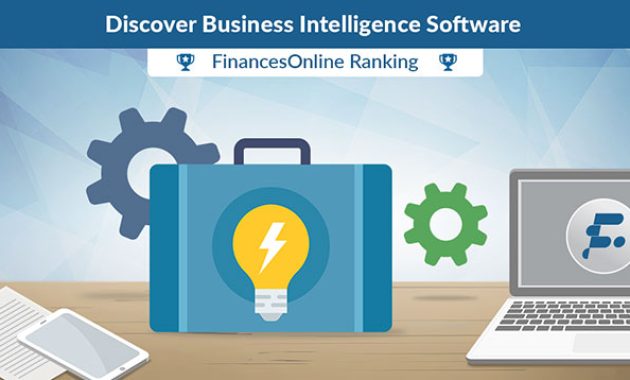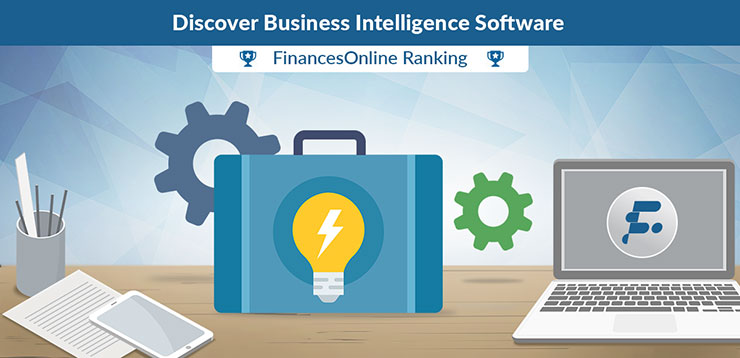
Master Business Intelligence Software in Simple Lessons: A Beginner’s Guide
The world is awash in data. Every click, every purchase, every interaction leaves a digital footprint. But raw data is useless. It’s like a treasure map without an X. To unlock the true value of this data, businesses turn to Business Intelligence (BI) software. This guide offers simple lessons to help you **master Business Intelligence software** and transform raw data into actionable insights. We’ll break down complex concepts into easy-to-understand steps, empowering you to make data-driven decisions.
The goal is not just to understand the software, but to use it effectively. This means translating data into real-world strategies that drive business growth. This article serves as your starting point. It will equip you with the foundational knowledge needed to navigate the world of BI.
Understanding the Fundamentals of Business Intelligence
Before diving into the software itself, it’s important to grasp the core principles of BI. At its heart, BI is about collecting, analyzing, and interpreting data to improve business performance. It’s a cycle that involves several key stages:
- Data Collection: Gathering data from various sources like databases, spreadsheets, and cloud services.
- Data Storage: Organizing the data, often in a data warehouse or data lake, for efficient access and analysis.
- Data Analysis: Applying analytical techniques to identify trends, patterns, and anomalies.
- Data Visualization: Presenting the findings in an easy-to-understand format, such as charts and dashboards.
- Decision Making: Using the insights to inform strategic decisions and improve business outcomes.
BI software is the tool that facilitates these stages. It provides the functionalities needed to manage and analyze data. It also allows businesses to make informed decisions.
Choosing the Right Business Intelligence Software
The market offers a vast array of BI software solutions. The best choice depends on your specific needs, budget, and technical expertise. Some popular options include:
- Tableau: Known for its user-friendly interface and powerful data visualization capabilities.
- Microsoft Power BI: A versatile and cost-effective solution, especially for users of the Microsoft ecosystem.
- QlikView: Offers associative data modeling, allowing users to explore data relationships in unique ways.
- Looker: A cloud-based platform that emphasizes data governance and collaboration.
- Sisense: Focuses on embedded analytics and providing insights directly within applications.
When selecting software, consider factors like ease of use, data integration capabilities, scalability, and reporting features. Free trials and demos are valuable tools for evaluating different options. Make sure the software aligns with your business goals.
Getting Started: Your First Steps with BI Software
Once you’ve chosen your software, the real journey begins. The initial steps typically involve:
- Connecting to Data Sources: This involves establishing connections to the databases, files, and services where your data resides. The software will provide connectors for various data sources.
- Importing and Cleaning Data: Data often needs cleaning to remove errors and inconsistencies. This process involves tasks like removing duplicates and standardizing formats.
- Creating Data Models: Data models define the relationships between your data. They help you organize and understand the data.
- Building Visualizations: This is where you transform your data into charts, graphs, and dashboards. These visualizations make it easy to understand the data.
- Sharing and Collaboration: Most BI software allows you to share your findings with colleagues. This facilitates collaboration and data-driven decision-making.
These steps are fundamental to most BI software platforms. They provide the groundwork for effective data analysis and reporting.
Simple Lessons: Hands-On Techniques for Mastering BI Software
Let’s delve into some practical techniques to help you **master Business Intelligence software**. These lessons are designed to be easy to understand and implement.
Lesson 1: Data Visualization Best Practices
Effective data visualization is crucial for communicating insights clearly and concisely. Here are some key tips:
- Choose the Right Chart Type: Select the chart type that best represents your data. For example, use a bar chart to compare categories. Use a line chart to show trends over time.
- Keep it Simple: Avoid clutter. Use clear labels and legends. Focus on the most important information.
- Use Color Strategically: Use color to highlight key data points. Avoid using too many colors, which can be distracting.
- Provide Context: Add titles, annotations, and other context to help viewers understand the data.
- Know Your Audience: Tailor your visualizations to your audience’s level of understanding.
Mastering data visualization is key. It allows you to tell a compelling story with your data.
Lesson 2: Creating Effective Dashboards
Dashboards provide a quick overview of key performance indicators (KPIs). They help you monitor your business performance. Here’s how to create effective dashboards:
- Define Your KPIs: Determine the most important metrics to track. These should align with your business goals.
- Layout and Organization: Arrange the visualizations in a logical and intuitive layout. Group related metrics together.
- Use Filters and Drill-Downs: Allow users to filter and drill down into the data. This helps them explore the data in more detail.
- Provide Alerts: Set up alerts to notify you of significant changes in your KPIs.
- Regularly Review and Update: Dashboards should be updated regularly. They should also reflect changes in your business needs.
Dashboards are powerful tools. They provide real-time insights into your business performance.
Lesson 3: Mastering Data Transformation
Data transformation involves cleaning, shaping, and preparing data for analysis. This process is essential for ensuring data quality and accuracy. Here’s what you need to know:
- Data Cleaning: Remove errors, inconsistencies, and duplicates. This is a crucial step.
- Data Shaping: Restructure data to make it suitable for analysis. This may involve pivoting or unpivoting data.
- Calculated Fields: Create new fields based on existing data. This enables you to derive new insights.
- Data Blending: Combine data from different sources. This allows you to create a more comprehensive view.
- Automate the Process: Automate data transformation tasks whenever possible. This saves time and reduces errors.
Data transformation is a critical skill. It ensures your analysis is based on reliable data.
Advanced Techniques for BI Software Mastery
Once you have a solid understanding of the basics, you can explore more advanced techniques. These techniques will enhance your ability to **master Business Intelligence software**.
Advanced Technique 1: Data Modeling and Relationships
Data modeling is the process of organizing data into logical structures. These structures show the relationships between different data elements. Effective data modeling can dramatically improve the performance of your BI reports. It can also simplify the analysis process. Consider these points:
- Understand Data Relationships: Identify the relationships between your data tables. This is a crucial step.
- Create Star Schemas: Use star schemas to optimize data retrieval. This design simplifies queries.
- Use Dimensional Modeling: Apply dimensional modeling techniques to organize your data. This improves reporting.
- Optimize Data Models: Regularly review and optimize your data models. This ensures efficient performance.
- Test Your Models: Test your data models to ensure they function correctly. This validates your results.
Mastering data modeling is essential for creating efficient and accurate BI reports.
Advanced Technique 2: Predictive Analytics and Forecasting
Many BI software platforms offer predictive analytics capabilities. These capabilities allow you to forecast future trends based on historical data. It allows you to make informed decisions. Key considerations include:
- Choose Appropriate Algorithms: Select the right forecasting algorithms for your data. This ensures accuracy.
- Use Time Series Analysis: Apply time series analysis techniques to analyze trends over time.
- Consider External Factors: Incorporate external factors that may influence your forecasts.
- Validate Your Models: Validate your forecasting models to ensure accuracy.
- Continuously Refine: Continuously refine your forecasting models. This improves their performance.
Predictive analytics can provide a significant competitive advantage. It helps you anticipate future trends.
Advanced Technique 3: Data Governance and Security
Data governance and security are critical for ensuring the accuracy, reliability, and confidentiality of your data. It is especially important for sensitive data. Consider the following:
- Implement Data Governance Policies: Establish clear policies and procedures. This ensures data quality and consistency.
- Control Access: Control access to your data. This protects sensitive information.
- Monitor Data Usage: Monitor data usage to identify potential security breaches.
- Secure Your Data Infrastructure: Secure your data infrastructure. This protects against cyber threats.
- Regularly Review and Update: Regularly review and update your data governance and security measures. This ensures they remain effective.
Data governance and security are essential for maintaining the integrity of your BI system.
Overcoming Common Challenges in Business Intelligence
Even with the right tools and knowledge, you may encounter challenges. These challenges can hinder your progress. Here are some common obstacles and how to overcome them.
- Data Quality Issues: Poor data quality can lead to inaccurate insights. Implement data cleaning and validation processes.
- Lack of Data Literacy: Ensure your team has the necessary data literacy skills. Provide training if needed.
- Integration Challenges: Integrating data from multiple sources can be complex. Choose software with robust integration capabilities.
- Resistance to Change: Encourage a data-driven culture. Demonstrate the value of BI to overcome resistance.
- Data Security Concerns: Address data security concerns with appropriate measures. Implement strong security protocols.
Addressing these challenges will help you maximize the value of your BI efforts. This will help you to **master Business Intelligence software**.
The Future of Business Intelligence Software
The field of BI is constantly evolving. New technologies and trends are emerging. Staying informed about these advancements is critical. Here are some key trends to watch:
- Artificial Intelligence (AI) and Machine Learning (ML): AI and ML are transforming BI. They are automating tasks and providing deeper insights.
- Cloud-Based BI: Cloud-based BI solutions are becoming increasingly popular. They offer scalability and flexibility.
- Data Democratization: Data democratization is making data accessible to everyone. This empowers users to make data-driven decisions.
- Embedded Analytics: Embedded analytics is integrating BI directly into applications. This streamlines the user experience.
- Focus on Data Storytelling: Data storytelling is becoming increasingly important. This helps communicate insights effectively.
Embracing these trends will help you stay ahead of the curve. It will also help you **master Business Intelligence software**.
Conclusion: Your Path to Business Intelligence Mastery
This guide has provided you with the essential knowledge and techniques to **master Business Intelligence software**. From understanding the fundamentals to exploring advanced techniques, you’ve gained a comprehensive overview. Remember that mastering BI is a journey. It requires continuous learning and practice. By applying the lessons learned here, you can transform data into a powerful asset. You will be able to drive informed decision-making. This guide serves as a starting point. Continue to explore and learn. Your journey to data mastery begins now.
The ability to use BI software is increasingly valuable in today’s data-driven world. By investing in your skills, you’re positioning yourself for success. You are also helping your organization thrive. By using these simple lessons, you will be able to **master Business Intelligence software** effectively. You will be prepared for the challenges and opportunities ahead.
[See also: Related Article Titles]

